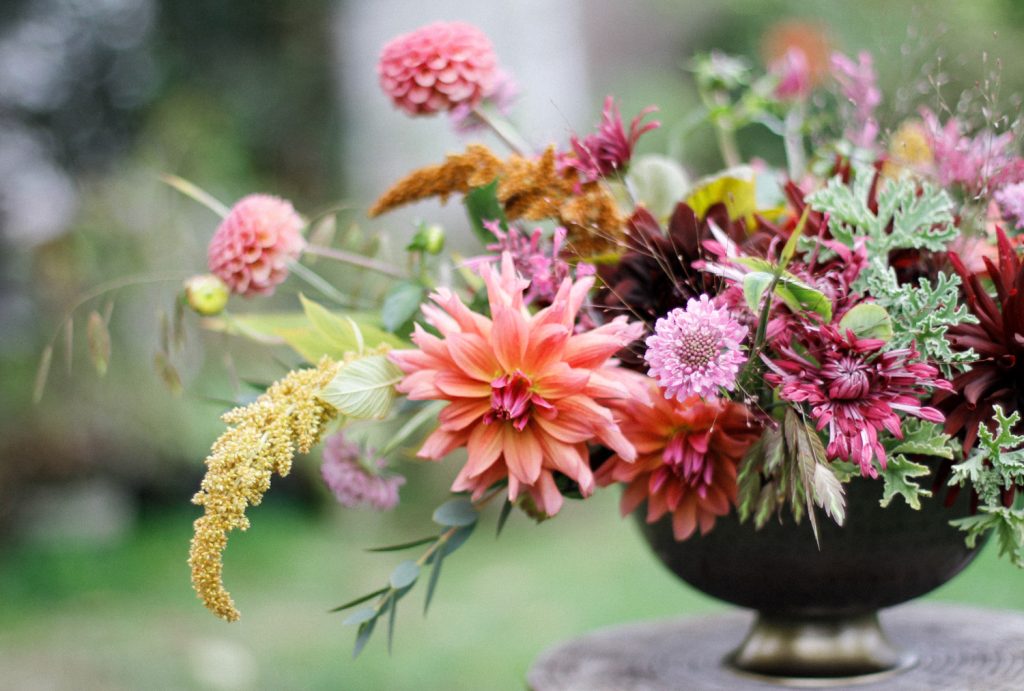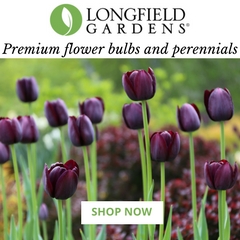Debra Prinzing, founder of Slow Flowers Society, shares a Vision and Message

Here we are in 2021, and it’s amazing to realize that 10 years ago, I had only just “discovered” the incredible imbalance in the floral marketplace – that 80 percent of cut flowers sold in the U.S. were imported. As an established garden writer with bylined articles appearing in Better Homes & Gardens, Garden Design, the Los Angeles Times and other respected outlets, I thought I had it all figured out.
But I was wrong. Because what avid gardeners and flower lovers like me hadn’t realized was that there was an intentional lack of transparency about the flowers we purchased from the florist or grocery store. There was a global flower marketplace that wanted us to assume those flowers were local or simply not question their origin.
Just because I grew roses, lilies, tulips, and many other beautiful flowers in my home cutting garden didn’t mean the giant floral industry sourced from my hometown, state or region, for that matter.
This discovery, and my passion for finding and telling a good story, influenced two journalistic projects: The 50 Mile Bouquet (2012) and Slow Flowers (2013), both published by St. Lynn’s Press.
In the first book, we casually used the phrase “Slow Flowers” in a headline to a beautiful foreword written by Amy Stewart. I had been using this term as shorthand to describe to other garden writers and friends what I hoped to accomplish by documenting flower farming and sustainable floral design. “It’s like ‘Slow Food,’ but with flowers!” I explained.
Local. Seasonal. Sustainable.
Debra Prinzing
These words became our tagline.
Many people, foodies and gardeners included, made the mental leap to understand what the adjective “slow” symbolized. Very early on, in a June 2013 blog post called “What Does Slow Flowers Mean, Anyway?” I wrote this:
Slow Flowers (the concept and the book) is also about the artisanal, anti-mass-market approach to celebrations, festivities, and floral gifts of love. I value my local sources. If not clipped from my own shrubs or cutting garden, I want to know where the flowers and greenery was grown, and who grew them. Having a relationship with the grower who planted and nurtured each flower is nothing short of magical. I call so many flower farmers around the country my friends. They are the unsung heroes – the faces behind the flowers we love.
That essay accompanied my announcement of the launch of Slowflowers.com, which debuted right before Mother’s Day in 2014 and has continued ever since. Today, slowflowers.com is just one branch of our flourishing tree of Slow Flowers Society and its content and programs. And with our membership ranks swelling to 900 members in all 50 U.S. states and most Canadian provinces, we have more voices – your voices – to communicate our mission and values to our flower customers.
Since it’s the final week of Membership Appreciation Month, I wanted to reflect on our growth and impact, as well as dream for where we’re heading!
Here is what I see on the horizon; what I’m striving for and what I hope you’ll join me in pursuing:
Even though this question: “What does Slow Flowers mean, anyway?” is still asked, it’s being asked less often. With 98 million social media impressions for the hashtag #slowflowers in the past year alone, there is no denying the term is used around the globe. It is shorthand for the same values I noted back in that 2013 blog post and it is synonymous with the goals and practices outlined in our manifesto.
In our Manifesto, we state that Slow Flowers commits to the following practices:
- To recognize and respect the seasons by celebrating and designing with flowers when they naturally bloom
- To reduce the transportation footprint of the flowers and foliage consumed in the marketplace by sourcing as locally as possible
- To support flower farmers small and large by crediting them when possible through proper labeling at the wholesale and consumer level
- To encourage sustainable and organic farming practices that respect people and the environment
- To proactively pursue equity, inclusion and representation in the floral marketplace, intentionally valuing Black floral professionals (farmers, floral designers and vendors) in our business practice with as much support as we give to environmental sustainability.
- To eliminate waste and the use of chemical products in the floral industry
As we approach 2022, my message to each of you is to dig deep into your own values and belief systems and ask yourself: What do I want to achieve through my floral enterprise? The idea of doing “better than” and doing good with our flowers is more important than ever. We’re seeing more of our members use their flowers as a vehicle for causes they support; using flowers to symbolize hope and humanity, while also building a business that offers a sustainable livelihood to them, their families and their employees while at the same time improving farmland and communities alike.
So please join with me and other Slow Flowers leaders and forerunners as we go all in to make meaning of our vocations. Let’s use each opportunity that our bunches, bouquets and designs afford to communicate these messages whenever we hand flowers to a buyer or recipient:
Let me tell you about these flowers and
where they were grown
Help me honor the farmer(s)
who grew them in our community or region
Let me share the many sustainable practices used to grow them and how important it is that those choices serve our environment
Let’s celebrate the best of each season – in season – when flowers are at their peak
Let’s redefine beauty as a celebration of the best flowers blooming in the moment, rather than yearning for something from a different time or placeThank you, members of the Slow Flowers Community! Together, we are making a difference, one stem, one vase at a time!


